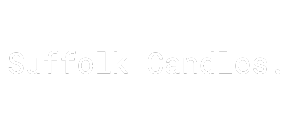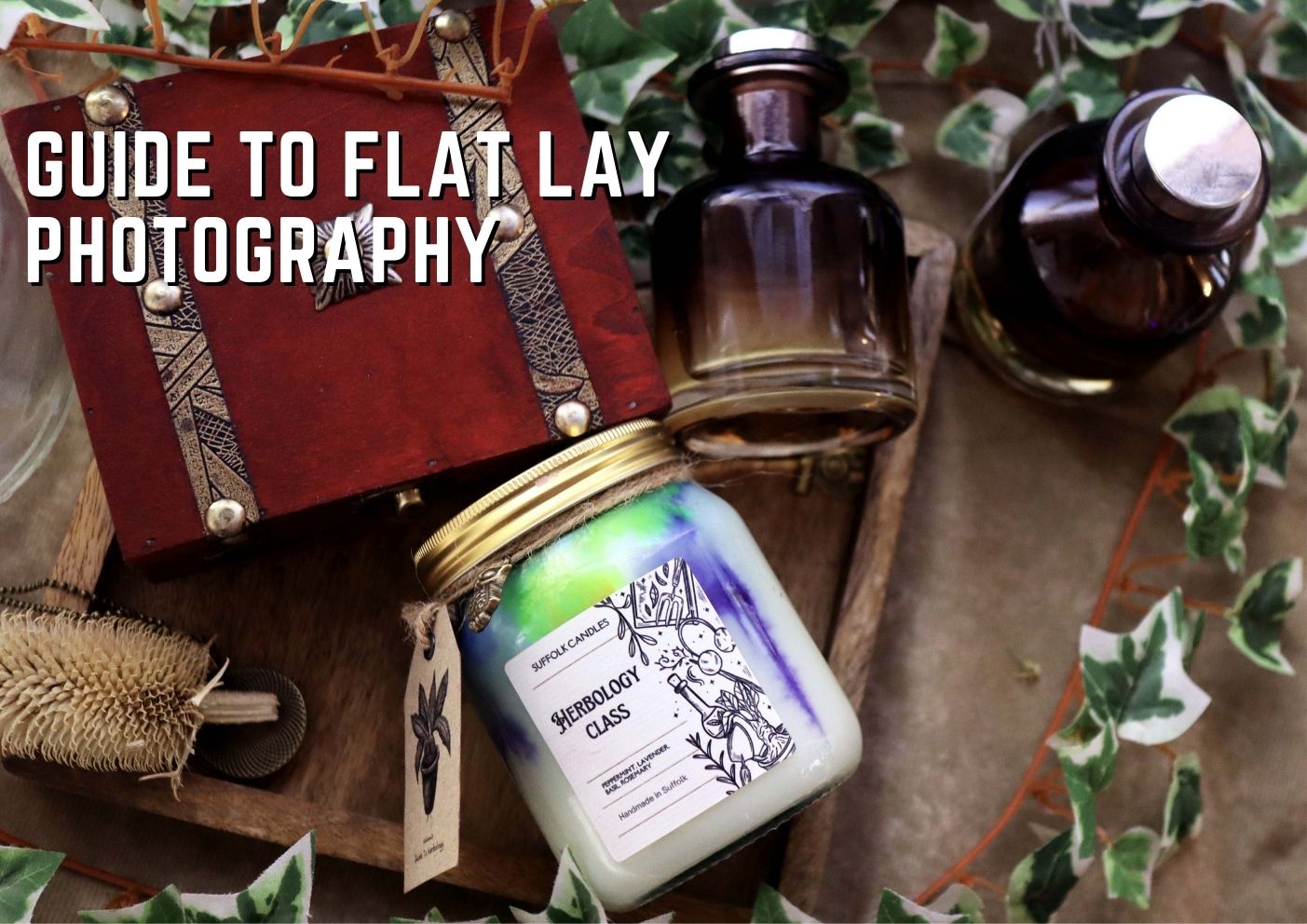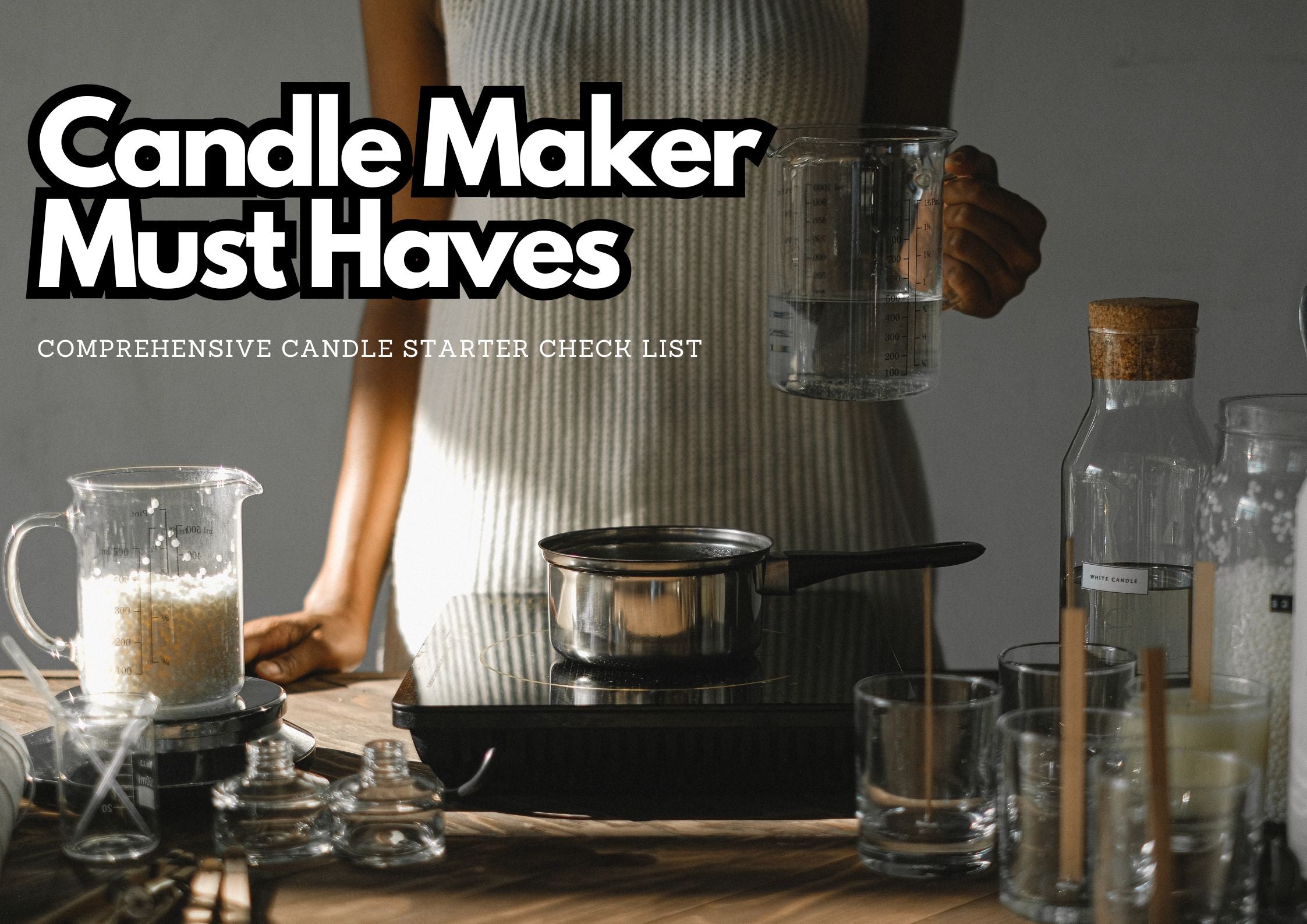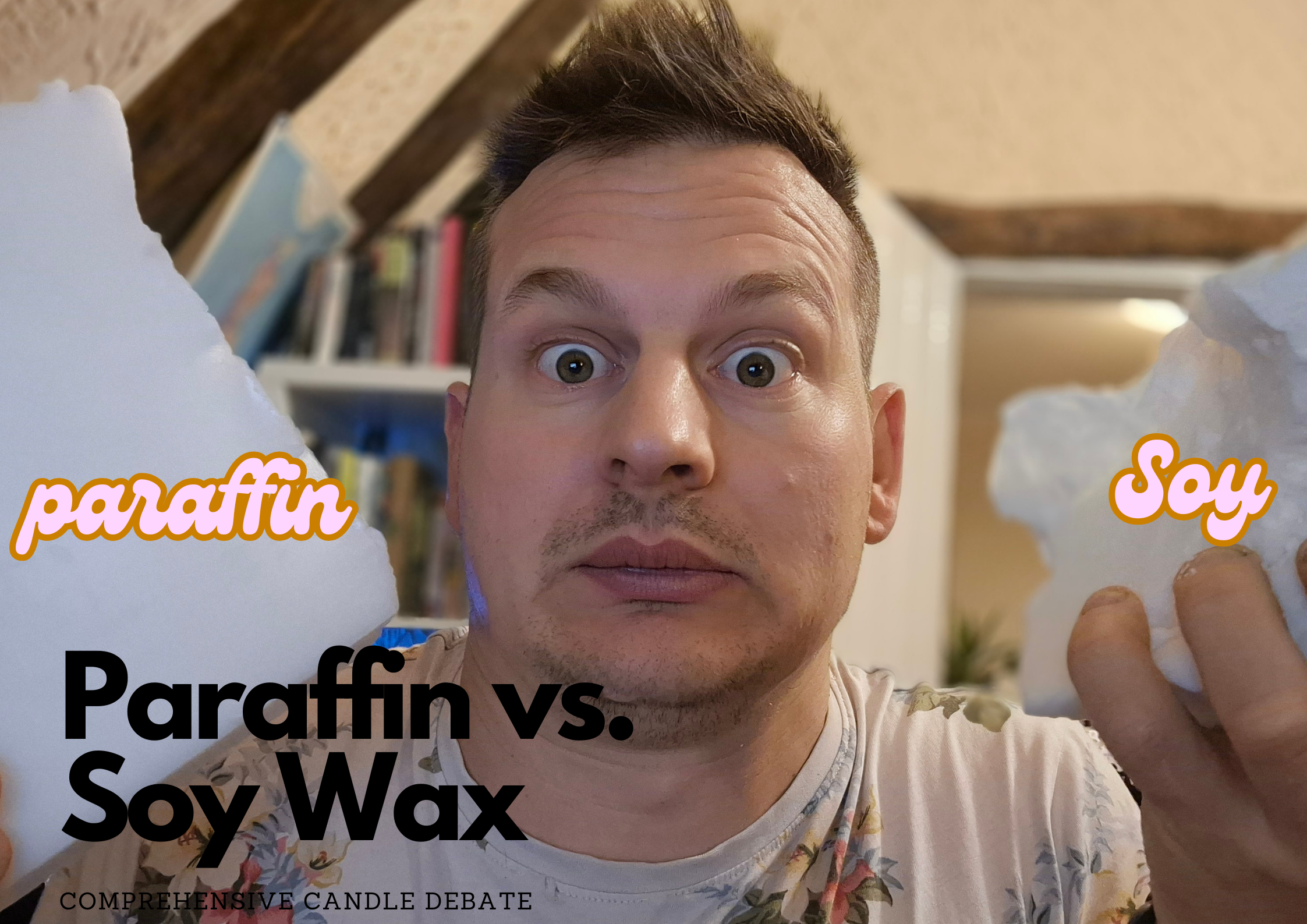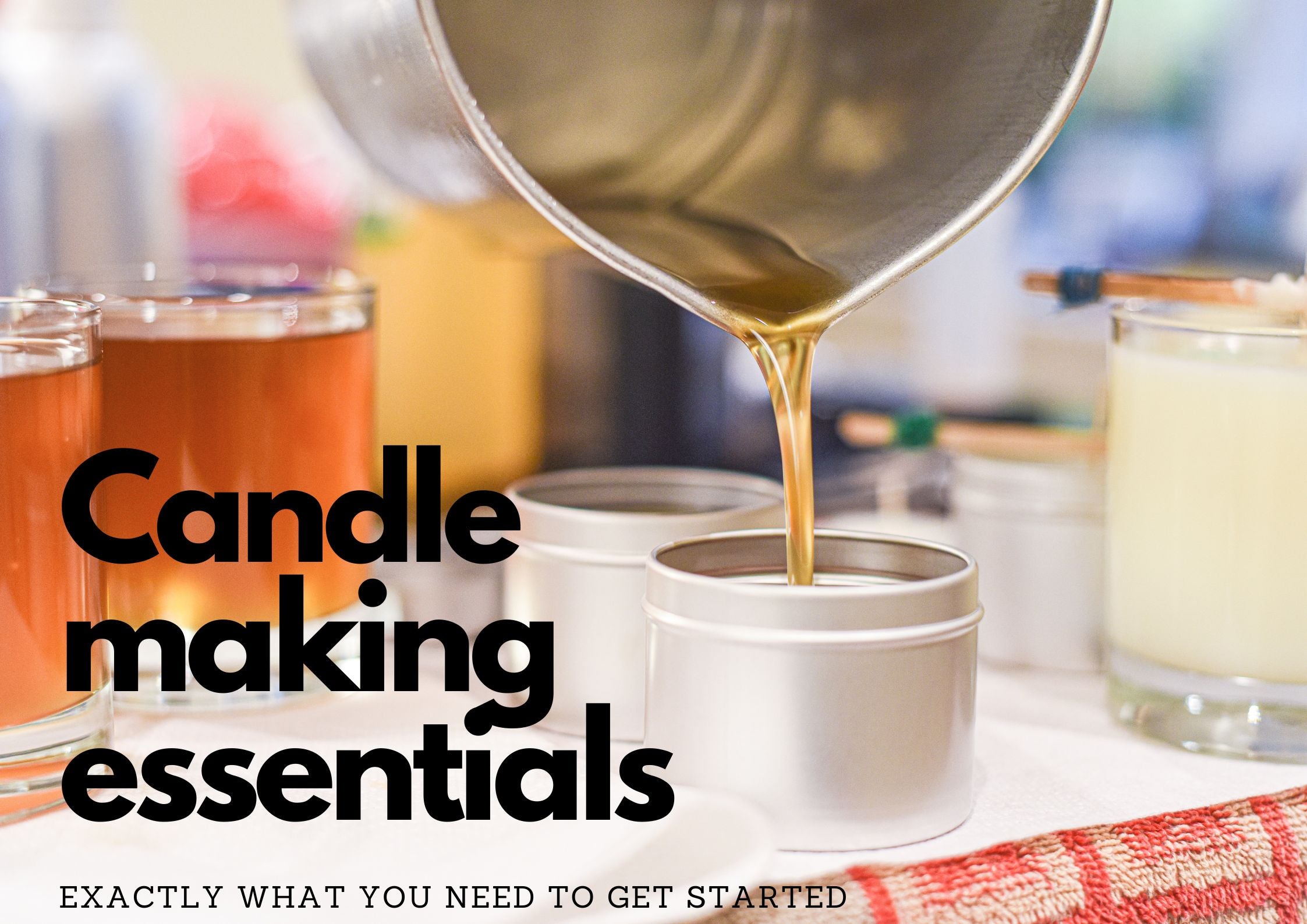Flat Lay Photography
Mar 15 , 2023
Flat lay photograph - Tips & How to Guide

Flat lay photography is a popular technique that involves taking pictures of objects from a bird's eye view. This technique has gained a lot of popularity in recent years, especially on social media platforms like Instagram, where users are constantly seeking new and creative ways to showcase their products.
As a part-time candle maker, I have found flat lay photography to be a valuable tool in promoting my brand on Instagram and improving the overall aesthetics of my Shopify store. In this article, I will explore the benefits of using flat lay photography, share tips for creating compelling flat lay images, and discuss how this technique can help boost your online presence. Whether you're a small business owner or simply looking to improve your social media game, flat lay photography is a technique worth mastering.
How I came across flat lay photography
Flat lay photography has become a staple in the world of social media and ecommerce, with its clean and aesthetically pleasing visuals catching the attention of many users. As a part-time candle maker, I was no exception to this trend. I found myself browsing Instagram for inspiration on how to take my candle photos to the next level and that's when I stumbled upon flat lay photography. As someone who had always been interested in photography, I was immediately drawn to this technique, despite it being outside of my comfort zone.
Pros and cons of flat lay photography:

Pros:
-
Showcases products in a visually appealing way: Flat lay photography is a great way to showcase products in a visually appealing way, making them more attractive to potential buyers.
-
Can be used to create a consistent aesthetic: By using the same background, props, and styling for all your flat lay photos, you can create a consistent aesthetic that will help strengthen your brand identity.
-
Increases engagement on social media: Flat lay photos tend to perform well on social media platforms like Instagram, where users are constantly seeking new and creative visuals to engage with.
-
Can be done on a budget: Flat lay photography doesn't require expensive equipment or studio space, making it an accessible option for small business owners and hobbyists alike.
-
Allows for creative expression: Flat lay photography allows for creative expression and experimentation with different props, backgrounds, and styling.
Cons:
-
Can be time-consuming: Creating a visually appealing flat lay photo can be time-consuming, as it requires careful planning, styling, and arrangement of props.
-
Requires a good eye for composition: Creating a visually appealing flat lay photo requires a good eye for composition, which can take some time to develop.
-
May not be suitable for all products: While flat lay photography can work well for many types of products, it may not be the best option for all products, such as those with complex shapes or textures.
-
May require editing skills: Editing skills may be required to adjust lighting, colour, and contrast to create the desired look.
-
Can be limiting in terms of creativity: While flat lay photography allows for creative expression, it can also be limiting in terms of perspective and composition, as it typically involves shooting from a bird's eye view.
You'll need a lot of stuff for flat lay photos

Get used to having a lot of junk around for flat lay photography, essentially you just need a lot of props - you will literally become a charity shop/thrift store yourself - with enough props to make a small budget movie haha.
I've started collecting all kinds of props such as: shells, books, quills, coins, keys, chests, twigs, rugs, scarfs, mugs, twine, candle holders, pots, jewellery.
It depends on your theme, I'm going for a rustic English theme as well as a few book themed candles, so I have a lot of fantasy style props. The more stuff you have around the better, it's mostly a case of trial and error and a lot of moving things from one place to the other....
Lighting for flat lay photography
Lighting is a crucial aspect of flat lay photography, as it can significantly impact the overall look and feel of the image. Ideally, you'll want to use natural light, as it provides a soft and even illumination that helps showcase the details of the objects being photographed. To achieve this, you can set up your flat lay near a large window or in a well-lit room. If natural light isn't available or isn't sufficient, you can also use artificial lighting such as soft box lights or ring lights to create a similar effect. It's important to ensure that the lighting is consistent across the entire flat lay, so consider using diffusers or reflectors to soften shadows or add more light to specific areas. Additionally, keep in mind that the colour temperature of the lighting can affect the colour of the objects being photographed, so be sure to adjust your camera's white balance accordingly to achieve accurate colours.
When I do my flat lays, I usually do them on the floor under a big sky light window, I have a few of my own lights but they're not that good as I'm a cheap skate - so natural light is what I rely on mostly and with anything photography based natural light is the king!
Choosing backgrounds for your flat lay photos

Choosing the right background is essential for creating visually appealing flat lay photography. There are various backgrounds that you can use to enhance your images and bring out the best in your products. One of the most popular options is a plain white or neutral-coloured background, as it provides a clean and minimalist look that allows the products to stand out. Alternatively, you can use textures or patterns to add interest and depth to your images. Some examples of textured backgrounds include marble, wood, or fabric, which can provide a subtle yet eye-catching backdrop. You can also experiment with colourful backgrounds or incorporate props and accessories that complement your products. Ultimately, the key is to choose a background that complements the products being photographed and enhances their visual appeal without overpowering them.
Best places to buy a flat lay background?
You can buy professional back drops quite easily on the internet, eBay is a great place to start I purchased a black style wooden floor board background, which works great for my Suffolk Candle brand - as it's rustic and shabby chic. Amazon also has plenty of backdrops available, cheap and cheerful is the way to go as the backdrop isn't the main focus.
You could also make your own backdrops... Seen a nice piece or plank of wood ? Perfect excellent texture and contrast for your flat lay images. You could also try gathering old book pages and sticking those down on a ply board. The idea with this is to get creative, think outside the box, you can create some epic back drops for your flat lays with very simple items.
How to take good flat lay shots

So you've got props, a back drop, you've found a nice window with natural light, it's now time to go to work. But how do I take a good flat lay image ?
Taking a good flat lay shot requires attention to detail and careful planning. The first step is to choose your subject and arrange the items in an aesthetically pleasing composition. Consider using odd numbers and different sizes and shapes to create a balanced look. Next, choose your background and lighting, ensuring that the lighting is even across the entire flat lay. Once everything is in place, position yourself above the flat lay and take the shot from directly above. Use a tripod to keep the camera steady and to ensure that the composition stays the same throughout the shooting process. Additionally, consider shooting in RAW format to allow for greater flexibility in post-processing. Finally, don't be afraid to experiment with different angles, props, and styling to create a unique and visually appealing image. With practice and attention to detail, you can take stunning flat lay shots that will enhance your social media and ecommerce presence.
When I'm taking a flat lay photo, I take loads, I'm constantly trying different angles, moving items around the background, just experimenting, it's an evolving, involved process. Take lots of flat lay shots and sift through them later, you'll pick out one or two gems, or something that didn't look great on your camera screen may look fantastic on the big screen.
Flat lay technique is something that takes time and practice, as I mentioned before it's something new to me, but with anything the more I do it the better my photos become and its a fun photography style to master. I've found it's really helped create a theme on my social media pages, it helps with the lifestyle aspect of photography and who doesn't appreciate stunning flat lays ?

Creating depth for flat lays
Creating depth with layers is a key technique for adding visual interest and dimension to flat lay photography. To achieve this effect, start by placing your main subject or focal point in the centre of the frame. Next, add layers of objects around it, using items of varying sizes, shapes, and textures to create a sense of depth and dimension. Consider using props that complement your main subject and add context or tell a story. For example, if you're photographing a set of baking supplies, you might include ingredients or finished baked goods in the layers to add depth and interest. Another technique is to use varying heights, such as propping up smaller items with books or boxes to create height variations in the layers.
Flat lay photography ideas
There are countless flat lay photography ideas to explore, and the possibilities are limited only by your creativity and imagination. Some popular themes include food and drink, beauty and cosmetics, fashion and accessories, stationary and office supplies, and travel and adventure. You can also experiment with different colour schemes and themes to create a cohesive and visually appealing image. For example, you might create a flat lay using only shades of blue or green, or focus on a specific holiday or season, such as a Christmas-themed flat lay or a beach-themed flat lay for summer. Don't be afraid to try new ideas and incorporate your personal style and interests into your photography.
For example with me and my book themed candles, I used open books, rustic chests, keys, pine cones to create depth and texture. Experimentation is key, another example is my seaside candle, I used my bed sheet which is blue and white, some shells, seaside themed items, and went for a blue and white sea theme.
Frequently asked questions about flat lays
Q: What is flat lay photography? A: Flat lay photography is a technique where objects are arranged and photographed from above, typically on a flat surface such as a table or floor.
Q: What are some tips for choosing objects for a flat lay? A: When choosing objects for a flat lay, consider the colour scheme, texture, and size of the items. Varying these elements can create visual interest and depth in the image.
Q: What kind of lighting is best for flat lay photography? A: Natural light is generally preferred for flat lay photography, as it provides a soft and even illumination. However, artificial lighting such as soft box lights or ring lights can also be used to create a similar effect.
Q: How can I create depth and interest in a flat lay image? A: Creating depth and interest in a flat lay image can be achieved by using layers of objects, varying heights and sizes, and incorporating props that complement the main subject.
Q: What kind of backgrounds can be used for flat lay photography? A: Plain white or neutral-coloured backgrounds are a popular option for creating a clean and minimalist look, but textures, patterns, and colourful backgrounds can also be used to add interest and depth to the image.
Q: What camera settings are best for flat lay photography? A: Shooting in RAW format can allow for greater flexibility in post-processing. Additionally, using a tripod and adjusting the aperture to achieve a shallow depth of field can help create a visually appealing image.
Q: What are some popular flat lay photography themes? A: Popular flat lay photography themes include food and drink, beauty and cosmetics, fashion and accessories, stationary and office supplies, and travel and adventure. However, the possibilities for themes are endless and can be tailored to your personal interests and brand.
